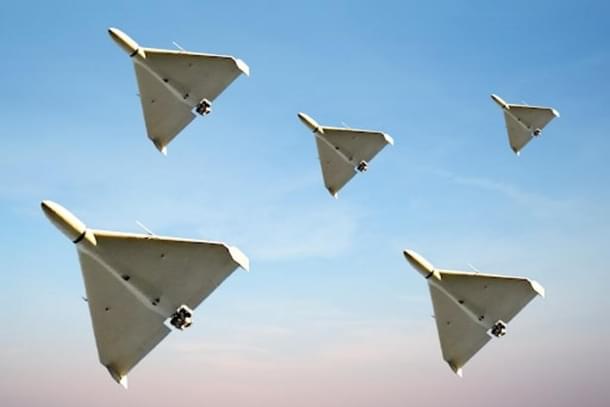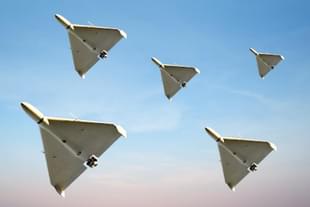News Brief
Indigenous Engines To Power India’s 1,000 Km Range Kamikaze Drones
Kuldeep Negi
Aug 14, 2024, 03:46 PM | Updated 03:46 PM IST
Save & read from anywhere!
Bookmark stories for easy access on any device or the Swarajya app.


In a significant development for India's defence sector, the National Aerospace Laboratories (NAL) is developing the indigenous Kamikaze Drones.
These advanced unmanned aerial vehicles, powered by indigenously developed engines, can fly up to 1,000 kilometers, NDTV reported.
Loitering munitions, often referred to as do-and-die machines, have seen extensive use in the ongoing conflicts such as the Russia-Ukraine war and the Israel-Hamas conflict in Gaza.
Ukrainian forces have notably employed these unmanned aerial vehicles to strike Russian infantry and armoured targets.
These drones are designed to loiter in a designated area for extended durations, carrying explosives to be deployed against targets upon command from a remote human operator.
Capable of being deployed in swarms, these drones can overwhelm enemy radars and defences, and strike multiple enemy installations.
Kamikaze missions, which involve ramming into targets, were first executed during the latter stages of World War II by Japanese pilots who used their fighter planes in suicide attacks against Allied aircraft and ships.
Dr Abhay Pashilkar, Director of the National Aerospace Laboratories and the project head, said, "India is developing these fully indigenous kamikaze drones, they are a game-changing 21st century new age war machine".
The Indian kamikaze drone will be around 2.8 meters in length with a wingspan of 3.5 meters, weigh around 120 kilograms, and carry an explosive charge of 25 kilograms.
The loitering munition will have an endurance of around nine hours.
Once the target is confirmed, the controller, upon receiving authorization, can dispatch the do-and-die drone on its suicide mission.
The Council of Scientific and Industrial Research (CSIR) has granted in-principle approval to initiate a project on Loitering Munitions, or kamikaze drones, with CSIR-NAL as the nodal laboratory, involving contributions from major engineering laboratories under CSIR.
The Indian kamikaze drone will be powered by a 30-horsepower Wankel Engine, designed and developed by the National Aerospace Laboratories, enabling continuous flight over distances of 1,000 kilometres with a maximum speed of 180 kilometres per hour.
Additionally, the Indian variant will be capable of operating in GPS-denied environments, utilising the Indian NAViC system for navigation and target acquisition.
Also Read: L&T Plans To Set Up Three Chip Fabrication Units In India With $12 Billion Investment
Kuldeep is Senior Editor (Newsroom) at Swarajya. He tweets at @kaydnegi.





